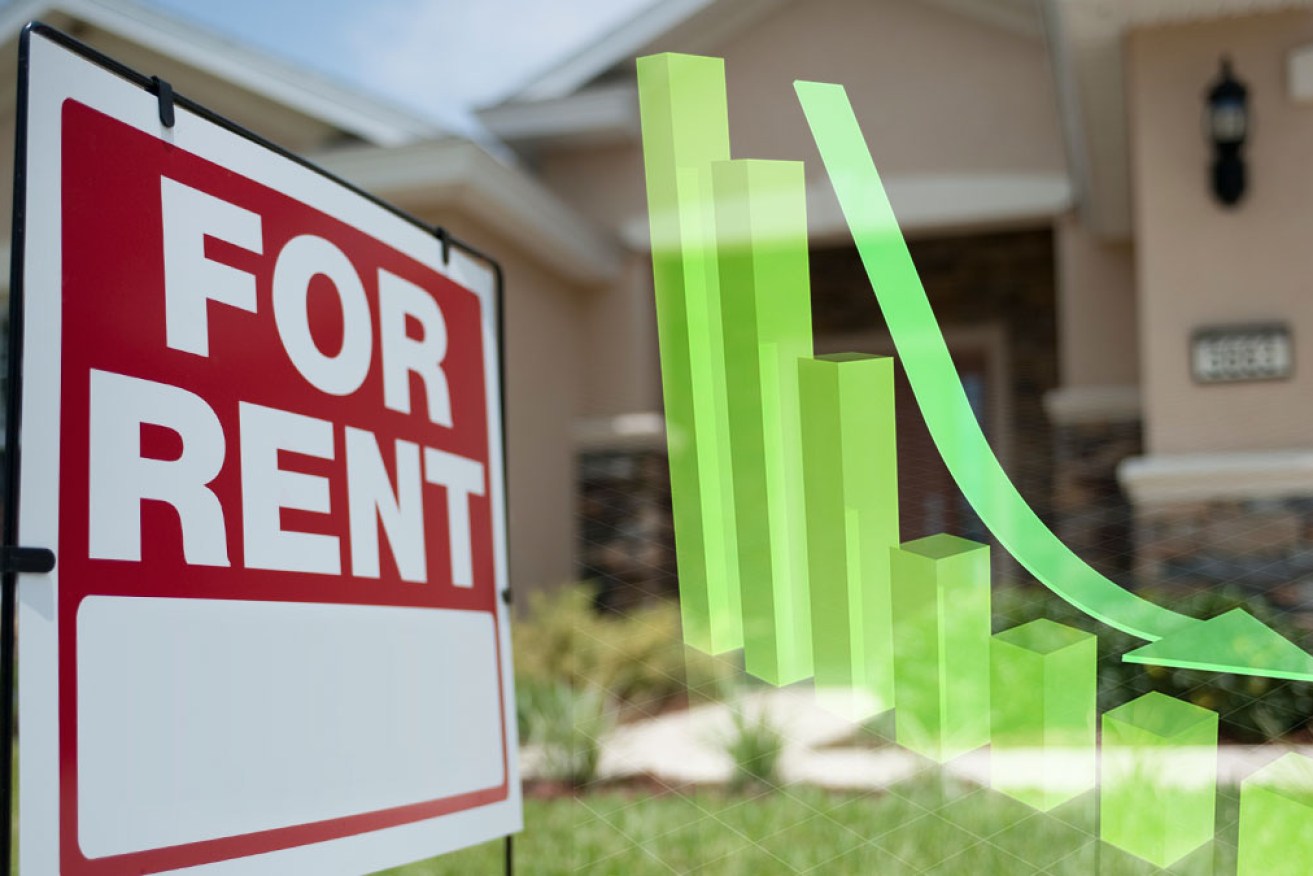Rents set to plummet as vacancy rates start to climb


Rental prices are tipped to fall amid a climate of falling demand and increasing supply. Photo: Getty/TND
Tenants can expect cheaper rents because of the coronavirus, with slowing immigration and a flood of new rentals putting renters in the driver’s seat.
International students have vacated rental properties en masse after the government shut borders and universities moved courses online.
Widespread job losses in the arts and hospitality sectors have forced countless younger tenants to move back in with parents.
And the impact of government restrictions on tourism has encouraged many Airbnb hosts to convert holiday lets into long-term rentals.
So much so that the national rental vacancy rate jumped 30 per cent in April, from 2 per cent to 2.6 per cent, according to investment research firm SQM Research.
Tweet from @LouiChristopher
There are now 88,668 vacant rental properties in Australia, which is more than 11,000 properties higher than in April 2019.
And analysis of capital city rents shows that asking prices for houses have already dipped 1.3 per cent to $537 per week, while asking rent prices for units remained stable at $428.
SQM Research founder Louis Christopher said a significant chunk of the vacancy blowout could be attributed to the conversion of short-term accommodation, including homes listed on Airbnb, to long-term rentals.
“Tourists and business travellers typically use a combination of hotels and short-term accommodation, including Airbnb properties, to stay in and around the CBD,” Mr Christopher told The New Daily.
“What we think has happened here is, with the closure of the borders, there are a whole bunch of Airbnb properties with no tenants leasing them whatsoever, so those property owners have decided to give long-term leasing a go.”
Tweet from @GemmaActon
University of New South Wales senior research fellow Dr Chris Martin noted that many of the inner-city suburbs with higher vacancy rates also have high international student populations.
“These areas are largely where our universities are located, and along with the recent boom in apartment construction, that’s formed part of this recent trend of increasing supply,” Dr Martin told The New Daily.
Where are the hardest-hit areas?
Unsurprisingly, the hardest-hit markets were capital city CBDs, inner suburban areas and tourist hubs.
Sydney’s CBD registered a record-high vacancy rate of 13.8 per cent (nearly three times last month’s rate).  Melbourne’s vacancy boom was less pronounced (7.6 per cent).
Melbourne’s vacancy boom was less pronounced (7.6 per cent).
But the rise at Southbank, a suburb directly south of the Victorian capital’s CBD, jumped from 5.0 per cent to 13.0 per cent in April.
 Among the other capitals, Brisbane CBD’s vacancy rate doubled to 11.3 per cent, along with Adelaide (6.6 per cent), Hobart (2.5 per cent) and Canberra (4.6 per cent).
Among the other capitals, Brisbane CBD’s vacancy rate doubled to 11.3 per cent, along with Adelaide (6.6 per cent), Hobart (2.5 per cent) and Canberra (4.6 per cent).
Rates also ballooned in holiday destinations, including Surfers Paradise (8.5 per cent) and Noosa (6.8 per cent).
This could be due to reduced demand for bookings amid dwindling tourist numbers.
According to short-term rental analytics firm AirDNA, the number of new bookings for Australian Airbnb properties plummeted from March’s high of 84,000 to 19,000 in mid-April.
What does this all mean for the price of rent?
Recent rental bond data from the Tenants’ Union of NSW, which showed the state’s median weekly rent for new tenancies fell more than $30 in April, hint that rental prices are already on a downward slope.
SQM Research’s Mr Christopher said the current market conditions have created a “tenants’ market” that gives an advantage to renters jostling to move to a cheaper property.
Additionally, it has placed further pressure on landlords to agree to rental reductions.
“Younger tenants who are normally active in the market and looking for their first rental property are not participating right now because of the current market conditions,” Mr Christopher said.
“So existing tenants are in a position where if they cannot secure a rental reduction, they can look elsewhere and find a cheaper tenancy which is of a similar quality.”
Tweet from @SimonPressley
But UNSW’s Dr Martin said moving in a pandemic was impractical.
He called upon state governments to help tenants negotiate rent reductions that better reflect the current level of oversupply.
“There will be constraints on people being able to benefit from the softening of the market,” Dr Martin said.
“Considering the widespread loss of income and the practical problem of people moving out in a pandemic situation, a more practical solution would be some form of mandated rental reduction.
“And also, this allows households that are technically not coronavirus affected to avoid playing chicken with their landlord and threaten to move out during negotiations.”








